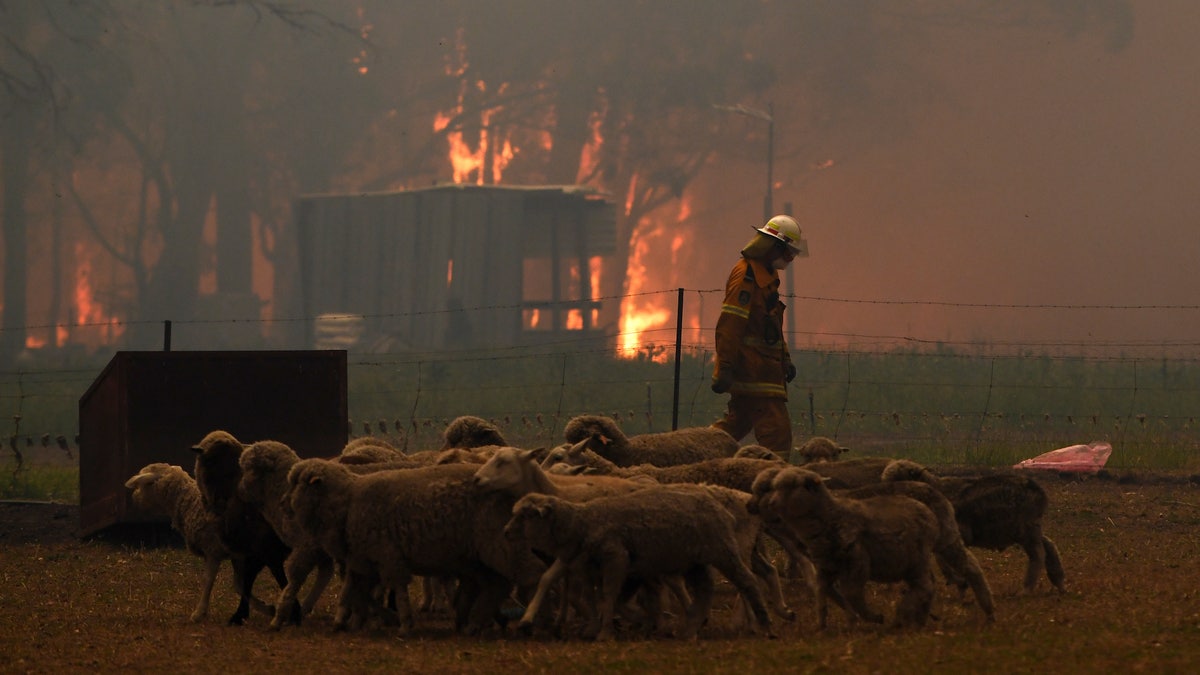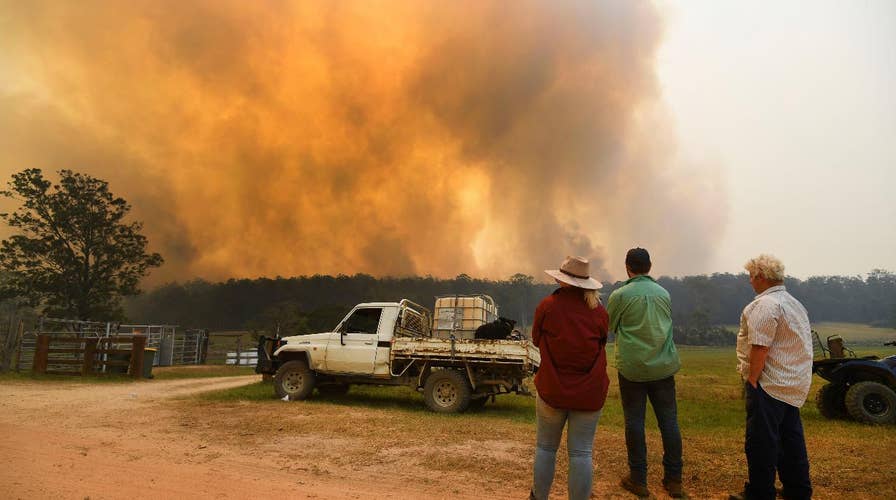Australian firefighters struggle to fast-moving flames as bushfires rage out of control
New South Wales remains under a week-long state of emergency; Benjamin Hall reports.
A state of emergency has been declared in Australia's most populous state amid a record-breaking heatwave that has sent temperatures soaring and helped to fuel around 100 wildfires.
Australia saw it's hottest-ever day on record on Tuesday before it was topped yet again within 24 hours when the country saw an average maximum temperature of 107.4 degrees Fahrenheit on Wednesday.
"Based on preliminary analysis, yesterday, Australia recorded its hottest day on record," Australia's Bureau of Meteorology tweeted.
AUSTRALIA HITS HOTTEST DAY ON RECORD AS DEADLY HEAT WAVE BROILS COUNTRY
The hottest temperatures were reported in locations such as Birdsville Airport and Kyancutta, where recordings of 117.8 Fahrenheit were reported.
The hot weather, which has come in the first part of Australia's summer, started early this year after an unusually dry and warm winter. High temperatures and strong winds have been fanning destructive bushfires around Australia.
On Thursday the country's most populated state, New South Wales, declared a seven-day state of emergency as around 2,000 firefighters battled around 100 wildfires, half of which remain uncontrolled.

A fire truck is seen during a bushfire near Bilpin, 56 miles northwest of Sydney, on Dec. 19, 2019. (Mick Tsikas/AAP Images via AP)
New South Wales Premier Gladys Berejiklian said authorities were concerned with the unpredictable conditions.
"With extreme wind conditions, extreme hot temperatures, we have a good idea, a good sense, of where the most concerning areas are, but again when you've got those turbulent conditions, embers and spot fires can occur very unpredictably,” she told reporters.
Rural Fire Service Commissioner Shane Fitzsimmons said five 100-member "strike teams" were on standby to deploy to the most dangerous fires.
AUSTRALIAN MAN CLAIMS TO HAVE COOKED 3.3 POUNDS OF PORK IN HOT CAR
Officials told Sky News that two male firefighters, 36 and 56, sustained face and airway burns while battling the Balmoral Fire. Another female crew member suffered minor burns and smoke inhalation and was rushed to a hospital for treatment.

Rural Fire Service crews engage in property protection of a number of homes along the Old Hume Highway near Tahmoor, New South Wales, as the Green Wattle Creek Fire threatens a number of communities in the southwest of Sydney, Thursday, Dec. 19, 2019. (Dean Lewins/AAP Images via AP)
At least 20 homes were destroyed and several firefighters were injured while battling blazes in the state on Thursday as the fires continue to be fueled by unpredictable winds and scorching temperatures.
The last state of emergency ran for seven days in mid-November amid "catastrophic" fire risk and was the first implemented in New South Wales since 2013. Central Sydney reached a maximum of 102 Fahrenheit on Thursday, while outer suburbs scorched at 108 F.
A statewide total fire ban announced on Tuesday will remain in place until midnight on Saturday.
CLICK HERE FOR THE FOX NEWS APP
Around 7.4 million acres of land has burnt nationwide in the past few months, with six people killed and more than 800 homes destroyed.

Australia's most populous state of New South Wales declared a seven-day state of emergency Thursday as oppressive conditions fanned around 100 wildfires. (Dean Lewins/AAP Images via AP)
The unprecedented fire conditions and hazardous air they have caused in places such as Sydney have reignited the debate on whether Australia’s conservative government has taken enough action on climate change. Australia is the world’s largest exporter of coal and liquefied natural gas.
Protesters on Thursday camped outside Prime Minister Scott Morrison’s Sydney residence demanding urgent action on climate change.
Morrison, who is currently on vacation, conceded last week that “climate change along with many other factors” contributed to the wildfires.
The Associated Press contributed to this report.

